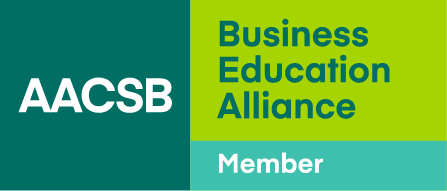Rethink Gateway Courses to Ensure Student Success
Sponsored Content
- In large first-year classes, students are often unprepared or disengaged, and they don’t always receive support as quickly as they need it.
- Simulations address these problems by offering students opportunities to make real-time decisions, reflect on the consequences, and receive instant feedback and guidance.
- Simulations also provide faculty and administrators with course-level data about how the learning experience is translating into student learning.
Every business school faces versions of the same challenges.
Students want their educations to be relevant. Faculty must find ways to do more with less. Administrators need to drive outcomes, support retention, and stay ahead of change.
Historically, an institution’s go-to response to these demands has been a comprehensive curriculum review. But that process is often long, resource-heavy, and poorly matched to today’s pace of change. Meanwhile, a deeper truth tends to go unspoken: Many of a school’s biggest challenges aren’t spread evenly across the curriculum. They’re concentrated—right at the beginning.
Why Gateway Courses Deserve More Attention
Introductory courses in subjects such as accounting, marketing, finance, and management often carry more weight than administrators acknowledge. Such courses don’t just introduce academic content—they shape how students experience business education as a whole.
And too often, that experience is discouraging.
Gateway courses, designed to be foundational, frequently become friction points. Engagement fades. Confidence dips. And once students start to struggle, they rarely recover on their own.
Introductory courses don’t just introduce academic content—they shape how students experience business education as a whole.
It’s not a matter of poor teaching. Faculty are trying everything—from redesigned syllabi to new tools to active learning strategies. It’s a matter of structure. These courses are typically large. Student preparedness is uneven. And student support systems, while well-intentioned, exist outside the flow of learning. Feedback loops are slow, personalized help is scarce, and self-doubt creeps in fast.
This isn’t a curriculum problem. It’s a student experience problem. And the earlier schools can fix it, the better the outcomes—for everyone.
A More Focused, Practical Way Forward
At Capsim, a simulation-based learning and assessment company, we work with business schools to embed into courses experiential learning opportunities that build real-world readiness. Over and over again, we have heard administrators report that students disengage from the learning process when they’re in large introductory courses.
We believe that, instead of overhauling the whole curriculum, schools can achieve real traction by zeroing in on the gateway experience itself. From our conversations with faculty and deans, we have found that one thing is clear: Meaningful change happens when learning feels active, feedback comes at the right time, and support is built into the moment—not tacked on after.
Students thrive when they’re making decisions, seeing the consequences, and reflecting on their choices in real time. They don’t want to simply memorize information—they want to apply knowledge. And when they struggle, they need guidance that helps them think more clearly in the moment, not a list of correct answers that are given to them after the fact.
Simulations not only provide real-time learning experiences and instant feedback for students, but they also meet critical needs for faculty and administrators.
Short, scenario-based simulations allow students to apply foundational concepts in realistic business settings—within the structure of the course.
Faculty, for instance, want tools that align with their pedagogy instead of disrupting it. When they have the right support, faculty are free to focus on the elements of higher-value teaching: nuanced discussions, coaching, and connection. When they incorporate new products into the classroom, their goal isn’t more features. It’s less friction.
Administrators look for tools that do more than provide pass rates and aggregate scores. They want solutions that give them visibility into what’s actually happening inside courses. They are seeking real insight into which concepts are proving difficult for students, where interventions are working, and how the learning experience is translating into meaningful outcomes.
Why Integration Matters
The market is full of tools. Most operate at the edges of a course, as add-ons or separate experiences. But we’ve found that true value comes when support is embedded directly into the learning flow. That’s the core philosophy behind our Gateway Course Series for CapsimInbox.
These short, scenario-based simulations allow students to apply foundational concepts in realistic business settings—within the structure of the course itself. Students make decisions, receive immediate formative feedback, and build confidence as they go. Faculty gain access to individual and cohort-level data that informs their teaching and helps them spot early signs of confusion or disengagement.
These simulations aren’t replacements for great teaching. They offer a way to make teaching more impactful—especially at scale.
In an introductory marketing course, for example, a simulation might enable students to act as junior marketing associates who help a local business navigate pricing pressure. As students work through the scenario, they analyze data, make recommendations, and receive guidance in the moment—coaching that mimics what faculty members might offer if they could sit with each student individually.
A Strong Start Makes Everything Better
Simulations provide advantages for everyone involved. Students benefit because what happens in gateway courses doesn’t stay in gateway courses. The confidence, habits, and conceptual grounding students build (or don’t) in these early experiences will stay with them for the rest of their academic careers.
Faculty can integrate simulations into introductory courses to provide early training to first-year students. Professors also can use simulations as refreshers in upper-level electives and capstones.
The confidence, habits, and conceptual grounding students build during simulations will stay with them for the rest of their academic careers.
Administrators can rely on the data from simulations to connect the dots across courses and gain a fuller picture of student development over time. And schools can employ simulations to strengthen student engagement and persistence without needing to bring in more support personnel, which adds new layers of overhead.
This model doesn’t just solve for today’s challenges. It sets the stage for continuous improvement, grounded in the actual learning experience—not just high-level reform.
Gateway Courses Are the Leverage Point
In Capsim’s conversations with deans and faculty across institutions, we have gained one clear insight: If you want to improve student success and retention, change what happens at the start.
The first few courses of a student’s journey are not simply logistical or academic checkpoints. They’re emotional, identity-forming moments—where students decide if they belong, if they can succeed, and whether they’ll stay.
When we provide students with early, clear, and consistent support, we do more than improve outcomes. We build momentum. And that momentum carries.
If business education is going to evolve, it won’t be because we added more tools. It will be because we made smarter choices about where to invest attention and energy. Gateway courses are more than entry points. They’re leverage points. Strengthen them, and you strengthen everything.





